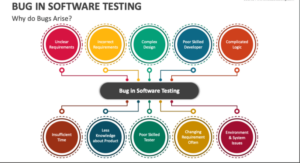Introduction
In the fast-paced world of software development, Operational Testing stands out as a cornerstone for enhancing system performance. For those looking to boost their skills, Training For Testers becomes essential to mastering the complexities of this critical process. But what exactly is operational testing how can it transform your QA career? This detailed exploration will guide you through the significance of H2K Infosys’s QA Testing Online Training Course can equip you with the skills needed to excel.
What is Operational Testing?
Operational testing evaluates a software system’s performance in conditions that mimic real-world operational environments. This testing phase aims to detect potential failures and performance issues that might not be apparent during earlier testing stages. By ensuring that software can handle expected and unexpected user behaviors under varied operational conditions, operational testing is crucial for maintaining robust, efficient, and scalable software systems.
Key Objectives of Operational Testing:
- Enhance user experience by optimizing software performance.
- Ensure software stability in real-world environments.
- Identify and resolve performance bottlenecks before deployment.
- Detect security vulnerabilities and usability issues.
- Validate system recovery mechanisms in case of failures.
Why Focus on Operational Testing?
It is a critical phase of QA that evaluates a system’s performance, security, and usability in environments that mimic real-world conditions. This type of testing is crucial for identifying potential issues that may not surface during earlier testing phases. By integrating our curriculum, H2K Infosys prepares you to tackle the most challenging aspects of software quality assurance, enhancing both the product’s performance and your career prospects.
The Importance of Operational Testing in QA
Operational testing is not just about finding bugs—it’s about ensuring that software products are market-ready, resilient, and user-friendly. Here’s why operational testing is indispensable in quality assurance:
- Real-World Usability: It verifies the software’s stability and usability in real-world scenarios, which can significantly improve user satisfaction and reduce maintenance costs.
- Performance Optimization: It identifies performance bottlenecks before the product goes live, allowing developers to optimize the software to meet expected load and stress conditions.
- Risk Mitigation: By catching issues early, operational testing helps mitigate the risk of failures post-deployment, which can be costly and damaging to a company’s reputation.
QA Testing Online Training at H2K Infosys
At H2K Infosys, the QA testing training course is meticulously designed to cover all facets of Quality Assurance, with a special focus on operational testing. Here’s what makes our course stand out:
- Comprehensive Curriculum: From basic principles to advanced techniques, our course covers everything you need to know about QA testing, including detailed modules on operational testing.
- Hands-On Training: We provide practical training with real-world projects and live testing scenarios that prepare you for real job challenges.
- Expert Instructors: Learn from industry veterans who bring years of experience and insider knowledge to the classroom.
Detailed Explanations with Real-World Examples
Consider the example of a popular e-commerce website that experiences slow loading times during peak shopping hours. Through QA professionals at H2K Infosys could simulate peak load conditions and identify bottlenecks in the website’s infrastructure. By resolving these issues, the site can handle high traffic volumes efficiently, leading to improved customer satisfaction and increased sales.
Educational and Practical Content
Our course emphasizes the practical relevance of every testing strategy taught. For instance, students will learn how to:
- Set Up Test Environments: Simulate network speeds, user loads, and more to create realistic testing environments.
- Use Performance Monitoring Tools: Get hands-on experience with industry-standard tools like JMeter and LoadRunner.
- Interpret and Act on Results: Learn to analyze test results to make informed decisions about optimizations and enhancements.
SEO Optimization and Long-Tail Keyword Integration
By integrating keywords such as “online courses for QA testing” and “QA tester training,” we ensure that our content reaches those who are most interested in advancing their skills in QA testing, providing them with the necessary resources and guidance to start their journey.
Section 1: Understanding Operational Testing
- Definition and Objectives: Clarify what operational testing involves and what it aims to achieve.
- Components of Operational Testing: Discuss various aspects like load testing, stress testing, security testing, and usability testing.
- Real-World Examples: Illustrate with examples from notable software releases.
Section 2: Key Techniques in Operational Testing
1. Performance Testing
- Measures the speed, responsiveness, and stability of a software system.
- Uses tools like JMeter, LoadRunner, and Gatling.
- Ensures the application performs well under different loads.
2. Security Testing
- Identifies potential security vulnerabilities and weaknesses.
- Protects data and prevents cyber threats.
- Uses tools like Burp Suite and OWASP ZAP.
3. Usability Testing
- Ensures the software is user-friendly and intuitive.
- Focuses on improving the overall user experience (UX).
- Uses tools like Crazy Egg and Google Analytics.
4. Stress Testing
- Simulates extreme load conditions.
- Ensures the software does not crash under high demand.
5. Load Testing
- Determines how the system behaves under normal and peak conditions.
- Helps in capacity planning and infrastructure improvements.
Section 3: Integrating Operational Testing in QA Training
1. Curriculum Overview
H2K Infosys integrates operational testing as a core module in its QA testing training.
2. Hands-On Training
We provide real-world projects and live testing scenarios to ensure practical learning.
3. Industry Relevance
These skills are highly in demand in the software testing job market, making them invaluable for career growth.
Section 4: Benefits of Operational Testing Training
1. Improved Software Quality
More robust, efficient, and secure software.
Enhanced system reliability and user experience.
2. Career Advancement
Higher salary prospects for QA testers with operational testing expertise.
Increased job opportunities in top tech firms.
3. Case Studies & Success Stories
We incorporate real-world case studies where operational testing has significantly improved software performance and business outcomes.
Conclusion and Call to Action
Are you ready to boost your career in quality assurance? Enroll in H2K Infosys‘s QA Testing Online Training Course today to gain hands-on experience with operational testing and enhance your ability to improve system performance. Join us to transform your professional path and master the art of quality assurance in software development!




























38 Responses
1. What is the process of operational testing?
Operational testing is a type of non-functional testing which involves confirming that the product, system, service and process meet operational requirements. (Operational requirements include performance, security, stability, maintainability, accessibility, interoperability, backup and recovery. )
The process of operational testing involves checking the functional or structural changes in to software in a functional and non functional environment. As such, testing is carried out to ensure whether software operates the way it is designed (i.e. intended) without disrupting the business process.
2. What are advantages and disadvantages of operational testing?
Advantages:
Operational testing allows feature interaction.
Operational testing validates the various aspects of the software product before it is released.
Operational testing ensures the optimum user experience.
Disadvantages:
It is a type non-functional testing, so testing functionalities is not a feature of the testing procedure.
Operational Testing is a non-functional testing which the product, system,source meets the operational requirements. Operational requirements like accessibility,maintainability,backup,recovery,quality,performance,etc.
The advantages of operational testing are it allows feature interaction, validates the various aspects of the software product before it released and ensures the optimum user experience. It checks the functional or structural changes in to software in a functional and non functional environment.
Operational testing is non functional acceptance testing ,it is mainly used to confirm product,system ,service & process meets operational requirements.Operational requirements include performance ,security,stability,maintainability,backup and recovery.
operational testing is necessary during operational configurations and operational support & components come together.it checks the functional or structural changes in to software in a functional and non functional environment.It test the software operates the way it is designed without disrupting the business process.operational testing mainly focuses on these things like resiliency,recovering ability , manageability,supportability,integrity.
Advantages:-It allows feature interaction, validates the various aspects of the software product before it is released and ensures the optimum user experience.
Disadvantages:- Operational based stimulation are often so complex that even the developer of the system does not know what the correct or best solution will be for a given problem.Each component must be tested independently which could be time consuming if there is a deadline.
What is the process of operational testing?
Operational testing is a type of testing which confirms that product, system, service and process meets operational requirements. The process of operational testing is test plan, develop test scripts, test execution, data collection and data analysis. Operational requirements include performance, security, stability, maintainability, accessibility, interoperability, backup and recovery. It is type of non functional acceptance testing. It is a critical evaluation done by the team of testers to verify the operational readiness of a software product. Performed during the last stage of software testing, this evaluation can be termed as the final verification before a system is released in the production environment.
What are advantages and disadvantages of operational testing?
Advantages:
–Allows feature interaction.
–It considers environmental factors that impact the system behavior, which further improves the quality of the end product.
–Validates various aspects of the product before its release, which ensures optimum user experience.
–Offers assistance with backup and restore facilities, disaster recovery, operational support, maintenance tasks, and more.
–Checks the software product for security vulnerabilities.
Disadvantages:
Operational based stimulation are often so complex that even the developer of the system does not know what the correct or best solution will be for a given problem.
Operational testing is type of non functional acceptance testing. Operational testing which confirms that product, system, service and process meets operational requirements. Operational requirements include performance, security, stability, maintainability, accessibility, interoperability, backup and recovery.
Operational testing is a type of testing which confirms that product, system, service and process meets operational requirements. Operational requirements include performance, security, stability, maintainability, accessibility, interchangeability, backup and recovery. It is type of non functional acceptance testing.
The types of operational testing are:
Component testing: In this type of testing each component is tested independently to find the defects and verify the functionality of the product.
Fail over testing: This type of testing mainly focuses on validating the product’s ability to allocate resources and the operations are moved to the backup systems.
Functional stability: The main team is concerned with ensuring the accessibility, stability and usability of the software product.
IT service management: The team is busy validating the sup portability of the software.
Portability testing: The team performs this type of testing to focus on the aspects like compatibility, interchangeability, installation and localisation of the product.
Recovery testing: The main purpose of this type of testing is to ensure the application data recovery across all data centers, if there is any security breach or disaster recovery.
e advantages of operational testing are
It allows feature interaction, validates the various aspects of the software product before it is released and ensures the optimum user experience.
Operational testing is a type of testing which confirms that product, system, service and process meets operational requirements. Operational requirements include performance, security, stability, maintainability, accessibility, interoperability, backup and recovery. It is type of non functional acceptance testing.
It allows feature interaction, validates the various aspects of the software product before it is released and ensures the optimum user experience.
What is the process of operational testing?
Operational testing is a type of non-functional testing which confirms that the product, system, service, and process meet operational requirements.
(Operational requirements include performance, security, stability, maintainability,
accessibility, interoperability, backup, and recovery. )
The process of operational testing involves checking the functional or structural changes into the software in a functional and nonfunctional environment.
As such, testing is carried out to ensure whether software operates the way it is
designed (i.e. intended) without disrupting the business process.
What are the advantages and disadvantages of operational testing?
The advantages of operational testing -it allows feature interaction,
validates the various aspects of the software product before it is released and
ensures the optimum user experience.
The disadvantage would be it is non-functional testing where testing functionalities
is not a feature of the testing procedure.
process of operational testing:
Operational testing is a type of testing which confirms that product, system, service and process meets operational requirements. Operational requirements include performance, security, stability, maintainability, accessibility, interoperability, backup and recovery. It is type of non functional acceptance testing.
2.Advantages and disadvantages of operational testing
Advantages:Operational testing is necessary during operational configurations and operational support and components come together. It checks the functional or structural changes in to software in a functional and non functional environment. It tests whether software operates the way it is designed without disrupting the business process.
Disadvantages:It is type of non functional acceptance testing.so the testers perfect soulution for the error what the software needed.
Operational testing is a type of non-functional acceptance testing which confirms that product, system, service and process meets operational requirements. Operational requirements include performance, security, stability, maintainability, accessibility, interoperability, backup and recovery.
Advantages-It allows feature interaction, validates the various aspects of the software product before it is released and ensures the optimum user experience.
Disadvantages- time consuming
1.What is the process of operational testing?
answer:
Operational testing is necessary during operational configurations and operational support and components come together. It checks the functional or structural changes in to software in a functional and non functional environment. It tests whether software operates the way it is designed without disrupting the business process. Operational testing mainly focuses on these things like:
Resiliency, Recovering ability, Manageability and supportability and Integrity
What are advantages and disadvantages of operational testing?
answer:
It allows feature interaction, validates the various aspects of the software product before it is released and ensures the optimum user experience.
1) process of operational testing
Operational testing is a type of testing which confirms that product, system, service and process meets operational requirements. Operational requirements include performance, security, stability, maintainability, accessibility, interoperability, backup and recovery.
2) advantages : allows feature interaction
validates the various aspects of the software product before it is released and ensures the optimum user experience.
disadvantage: .Each component must be tested independently which could be time consuming if there is time limit.
What is the process of operational testing?
It confirms that product, system, service and process meets operational requirements. Operational requirements include performance, security, stability, maintainability, accessibility, interoperability, backup and recovery. It is type of non functional acceptance testing.
Advantage: It allows feature interaction, validates the various aspects of the software product before it is released and ensures the optimum user experience.
Disadvantage: product will not work as expected.
A1. The process of operational testing are: Resiliency, recovering ability, Manageability and supportability and integrity.
A2. Advantages:
Allows feature interaction, validates the various aspects of the software before it is released and ensures optimum user experience.
Disadvantages:
Time consuming. Adds an extra step to the process and delays the release of software.
Operational testing is a type of testing which confirms that product, system, service and process meets operational requirements.
-Advantage of operational testing is it allows features like interaction which validates the various aspects of the software product before its released and ensures the optimum user experience.
– Disadvantage of operational testing is that during operational testing changes may be made to environmental parameters which the application uses to run smoothly
1) Operational testing is a type of It is type of non functional acceptance testing. Which confirms that product, system, service and process meets operational requirements. Operational requirements include performance, security, stability, maintainability, accessibility, interoperability, backup and recovery.
2) Advatages: during operational testing, backups taken at one site can be recovered at the same site.
The implementation of new features into the live production environment should not affect the integrity of current production services.
It allows feature interaction, validates the various aspects of the software product before it is released and ensures the optimum user experience.
3) Disadvantages: In this type of testing each component is tested independently.
It is time consuming testing.
1 operational testing types of nonfunctional acceptance testing. operational testing which makes sure the system meets the operational requirement which includes security, maintainability, performance, backup, recovery. operational testing is necessary during operational configuration and operation support.
2 Advantages
It tests whether software operates the way it is designed without disrupting the business process.
it allows functions to validate the different aspects of the software product before it is released.
ensures the optimum user experience.
Disadvantage
to ensure the product working it use lots of testing
time-consuming
It is a type of non functional testing that focuses on the operational requirements like security, stability , performance etc.
The advantage is it reduces operational risk and cost.
The disadvantage is overall Project cost increases due to operational testing.
Operational testing is type of non functional acceptance testing. Operational testing which confirms that product, system, service and process meets operational requirements. Operational requirements include performance, security, stability, maintainability, accessibility, interoperability, backup and recovery.
Operational testing is a type of testing which confirms that product, system, service and process meets operational requirements. Operational requirements include performance, security, stability, maintainability, accessibility, interoperability, backup and recovery. It is type of non functional acceptance testing.
What is the process of operational testing?
Operational testing is a type of testing which confirms that product, system, service and process meets operational requirements. Operational requirements include performance, security, stability, maintainability, accessibility, interoperability, backup and recovery. It is type of non functional acceptance testing.
What are advantages and disadvantages of operational testing?
The advantages of operational testing are:
It allows feature interaction, validates the various aspects of the software product before it is released and ensures the optimum user experience.
During operational testing, backups taken at one site can be recovered at the same site. The implementation of new features into the live production environment should not affect the integrity of current production services.
Operational acceptance testing a technique performed to verify the operational readiness of a product or application under test as part of Software test life cycle. This testing technique mainly focus on operational readiness of the system, which is supposed to mimic the production environment. To ensure they hold up in a variety of conditions and perform according to your expectations. To evaluate the product’s performance, security, accessibility, stability, maintainability, and more while it is connected to and interacts with other devices.
Without OAT, a software solution could go to market with significant defects that hinder its performance, security, reliability, or stability. In the end, significant defects or software bugs can result in the commercial failure of any product or service.
Failover: In the case of a failover, the failback is capable to managing the system until the primary system is backup and running. This helps to ensure redundancy is working.
Capacity Management: Verify the capacity of different system limits by simulating hundreds or thousands of requests or interactions.
Back and Restore: Ensure that the system can be backed up and and restored to protect data.
Alerts and Monitoring: Evaluate the system’s ability to generate alerts and recommendations that result from components failures.
Implementation Testing: Confirm changes to the production environment can be successfully integrated and that such changes do not negatively affect the production service.
What is the process of operational testing?
It is non-functional acceptance testing where it confirms that the product, system, service and process meets operational requirements. Such as that of performance, security, stability, maintainability, accessibility, interoperability, backup and recovery.
What are advantages and disadvantages of operational testing?
The advantage is that it allows feature interaction, validates the various aspects of the software product before it is released and ensures the optimum user experience.
The disadvantage is that Operational based simulation are often so complex that even the developer of the system may not know what the correct or best way may be.
The process of operational testing confirms that the product, system, service, and process meets the operational requirements such as: performance, stability, maintainability, integrity, interoperability, back up and recovery.
Advantages: it checks the functional and structural changes in the software; tests whether the software operates the way it is designed without disrupting the business; allows feature interaction, validates the various aspects of software before it is released, and ensures optimum user experience.
Operational testing makes sure that product, system, service and process meets operational requirements like performance, security, stability, maintainability, accessibility, interoperability, backup and recovery.
It is type of nonfunctional acceptance testing. Operational testing refers to the assessment of a software application before the production phase. It mainly focusses on operational readiness of the system.
Advantages: 1. It tests whether software operates the way it is designed without disrupting the business process.
2. Assesses the software application before the production phase.
3. Focusses on operational readiness of the system
4. It allows feature interaction, validates the various aspects of the software product before it is released and ensures the optimum user experience
Disadvantages: Operational testing comes under non-functional testing and the focus on operational readiness of the system may overlook functional testing.
The process of operational testing is test plan, develop test scripts, test execution, data collection and data analysis. Operational requirements include performance, security, stability, maintainability, accessibility, interoperability, backup and recovery.
It allows feature interaction, validates the various aspects of the software product before it is released and ensures the optimum user experience.
1.Operational testing is a type of testing which confirms that product, system, service and process meets operational requirements. Operational requirements include performance, security, stability, maintainability, accessibility, interoperability, backup and recovery.
2.The advantages of operational testing are:
It allows feature interaction, validates the various aspects of the software product before it is released and ensures the optimum user experience.
The disadvantages of operational testing are:
it is really a long process so can say its time consuming
Operational testing is a type of testing which confirms that product, system, service and process meets operational requirements. Operational requirements include performance, security, stability, maintainability, accessibility, interoperability, backup and
recovery.The advantages of operational testing are it allows feature interaction,validates the various aspects of the software product before it is released and ensures the optimum user experience.Disadvantage,it is a non functional acceptance testing, Time consuming.
1. Operational testing is a type of testing which confirms that product, system, service and process meets operational requirements. Operational requirements include performance, security, stability, maintainability, accessibility, interoperability, backup and recovery.
2. The advantages of operational testing are that it allows feature interaction, validates the various aspects of the software product before it is released, and ensures the optimum user experience. The disadvantages of operational testing are that it is a non functional form of testing meaning it requires more resources, time, and effort and it doesn’t show any defects in the process.
What is the process of operational testing? What are the advantages and disadvantages of operational testing?
Answer: Operational acceptance testing is a technique to verifies the system’s operational readiness. It is also known as Operational readiness testing(ORT). Operational requirements include performance, security, stability, maintainability, accessibility, interoperability, back up and recovery.
This testing is done before the software is realized or deployed, just after the execution of UAT.
Advantages-> It allows features interaction, validate various aspects of software product before realize.
Disadvantages-> Requires more resources, time etc.
Operational testing is a type of testing which confirms that product, system, service and process meets operational requirements. Operational requirements include performance, security, stability, maintainability, accessibility, interoperability, backup and recovery. The advantages of operational testing are, It allows feature interaction, validates the various aspects of the software product before it is released and ensures the optimum user experience. Disadvantage: time consuming
What is the process of operational testing?
Operational testing is a type of testing which confirms that product, system, service and process meets operational requirements. Operational requirements include performance, security, stability, maintainability, accessibility, interoperability, backup and recovery.
What are advantages and disadvantages of operational testing?
1)Advantage
It allows feature interaction, validates the various aspects of the software product before it is released and ensures the optimum user experience.
2)Disadvantage :
operational testing is a non functional form of testing meaning it requires more resources, time, and effort and it doesn’t show any defects in the process.
Operational testing is a type of testing which confirms that product, system, service and process meets operational requirements. Operational requirements include performance, security, stability, maintainability, accessibility, interoperability, backup and recovery. It is type of non functional acceptance testing.
The advantages of operational testing are
It allows feature interaction, validates the various aspects of the software product before it is released and ensures the optimum user experience
1. What is the process of operational testing?
Operational testing is necessary during operational configurations and operational support and components come together. It checks the functional or structural changes in to software in a functional and non functional environment. It tests whether software operates the way it is designed without disrupting the business process. Operational testing mainly focuses on these things like:
Resiliency, Recovering ability, Manageability and supportability and Integrity
2. What are advantages and disadvantages of operational testing?
The advantages of operational testing are
It allows feature interaction, validates the various aspects of the software product before it is released and ensures the optimum user experience.
What is the process of operational testing?
Operational testing is a type of testing which confirms that product, system, service and process meets operational requirements. Operational requirements include performance, security, stability, maintainability, accessibility, interoperability, backup and recovery.
What are advantages and disadvantages of operational testing?
The advantages of operational testing are that it allows feature interaction, validates the various aspects of the software product before it is released, and ensures the optimum user experience. The disadvantages of operational testing are that it is a non functional form of testing meaning it requires more resources, time, and effort and it doesn’t show any defects in the process.
1. what is the process of operational testing?
Operational testing is a type of testing which confirms that a product, system, service and process meets operational requirements. Operational requirements include performance, security, stability, maintainability, accessibility, interoperability, backup and recovery. It is a nonfunctional acceptance testing.
2. what are the advantages and disadvantages of operational testing?
It allows features interaction, validates the various aspects of the software product before it is released and ensures the optimum user experience.
Operational testing mainly focuses on these things like:
Resiliency, Recovering ability, Manageability and supportability and Integrity
Process of Operational Testing : includes performance, security, stability, maintainability, accessibility, interoperability, backup and recovery. It is type of non functional acceptance testing.
The advantages of operational testing are
It allows feature interaction, validates the various aspects of the software product before it is released and ensures the optimum user experience.
Disadvantage:operational testing is a long process and might overlap with other testing phases.
Operational testing is a specialized testing technique that helps you to evaluate a software product’s operational readiness before deployment in the production environment.
Advantage:
It allows feature interaction, validates the various aspects of the software product before it is released and ensures the optimum user experience.
Disadvantage:
The overall project costs tend to increase.
It can be time-consuming to implement if you need to deliver an application with strict timelines